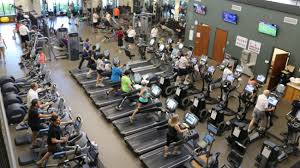3. Assemble your equipment
You will probably start with athletic shoes. Make sure to pick shoes that are designed for the activity you have in mind. For example, cross-training is more supportive than running shoes, which are lighter in weight.
If you are planning to invest in exercise equipment, select something that’s practical, easy to use, and enjoyable as well. You should try out certain types of equipment at a fitness center before buying your own equipment.
You may also consider using fitness apps for smart devices or other activity tracking devices like ones that can track calories burned, track your distance, or monitor your heart rate.

4. Get started
Once you’re ready for action, as you begin your fitness program, consider these tips:
· Start slowly and build up gradually. Spend time on warming up and cooling down with gentle stretching or easy walking. Then speed up to a pace that you can continue for 5 to 10 minutes without getting overly tired.
· Break things up if you have to. You can weave in activity throughout your day. Shorter but more-frequent sessions also have aerobic benefits. Exercising in short sessions a few times a day might fit into your schedule better than a single 30-minute session.
· Be creative. Your workout routine might include various activities like walking, rowing, or bicycling. But don’t just stop there. Spend an evening ballroom dancing or take a weekend hike with your family. Find activities that you enjoy to add to your routine.
· Listen to your body. Take a break if you feel pain, dizziness, nausea, or shortness of breath. You might be pushing yourself too hard.
· Be flexible. If you are not feeling good, allow yourself to take one day or two off.
5. Monitor your progress
After you start your program, retake your personal fitness assessment for six weeks and then again every few months. If you lose motivation, try a new activity or set new goals. Taking a class at a fitness center or exercising with a friend might also help.
